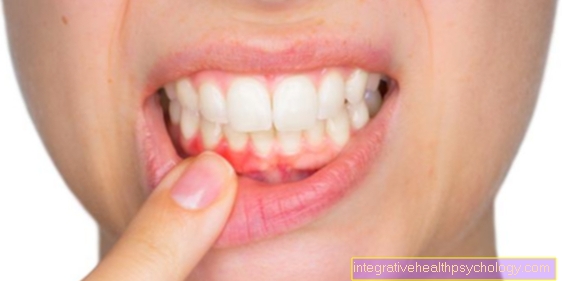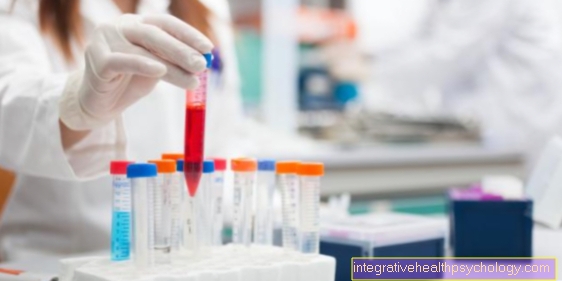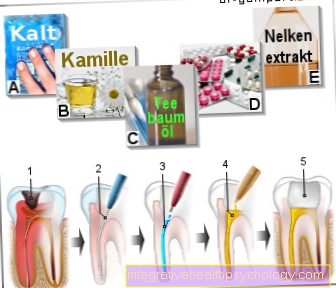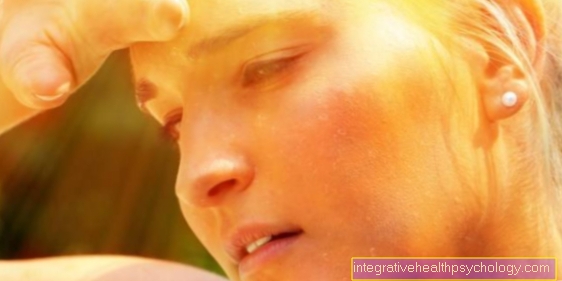Tear duct stenosis
introduction
Are you currently struggling with a very watery or downright overflowing eye? This trickling of tears could be an indication of tear duct stenosis. This is a closure of the tear duct. The lacrimal gland is located above the eye approximately at the level of the outer eyelid and produces the tear fluid. This serves to moisten and nourish the cornea as well as to wash it out and protect it from foreign bodies. The blink of an eye moistens the eye evenly.
That tear fluid must also drain away, which happens via the draining tear ducts at the inner corner of the eye. There are so-called tear points through which the fluid enters the nose through the tear ducts, the tear sac and the nasal passage. However, if the tear duct is blocked and the drainage is obstructed, the eye will continuously water. This occlusion can also cause severe inflammation.

Detecting tear duct stenosis
What are the symptoms of tear duct stenosis?
The main symptoms of lacrimal canal stenosis are a continuously runny eye and painful swelling around the inner corner of the eye. Furthermore, it can lead to eye irritation and, in an advanced stage, to tear sacs. In this case, the typical signs of inflammation such as reddening, overheating, pain, swelling and functional impairment become noticeable and purulent secretions are possible.
In adults, vision is blurred due to the increased amount of tear fluid in the eye. Such visual impairment can manifest itself when reading or driving a car, for example.
Also read: Clogged tear duct symptoms and therapy
How is lacrimal stenosis diagnosed?
If there is a suspicion of a stenosis of the lacrimal ducts, an ophthalmologist should be consulted immediately. This will determine whether there is actually an obstruction or a narrowing of the tear duct and where exactly the obstruction or constriction can be located. Suitable diagnostic methods can be an ultrasound and an X-ray examination of the tear sac.
In most cases, an eye test, a close look at the eye and a thorough wash of the tear duct complete the diagnosis and examinations before a possible lacrimal duct surgery.
Treat tear duct stenosis
How is lacrimal stenosis treated?
The treatment of tear duct stenosis differs depending on the cause of the disease. In most cases, however, probing and irrigation of the tear duct is recommended, as it is a small procedure with a high healing rate.
If the occlusion is due to an infection, it is first treated with antibiotics in order to carry out a tear duct operation after the acute inflammation has been eliminated. The surgical method depends on the location of the closure.
In addition to probing with a fine metal probe, there is also the possibility of expanding the tear ducts with the help of balloon dilatation. If the lacrimal duct is completely closed, a Dacryocystorhinostomy be carried out, in which an artificial passage is created between the tear sac and the nose through the bone in order to guarantee the drainage of the tear fluid. There are also different methods of this operation, one can operate on the nose itself from the inside, on the other hand through a skin incision from the outside. In both cases, a fine, soft silicone tube is used so that the newly created path remains open and functional during the postoperative healing phase.
In infants, it is first observed whether the tear duct opens spontaneously during the first year of life. If this is not the case, the occlusion should be treated by probing the tear duct. During this short tear duct operation, which is performed under general anesthesia, a fine metal probe is inserted to remove the stenosis. In severe cases, silicone intubation is performed in addition to probing.
How can a tear sac massage help with tear duct stenosis?
The tear sac massage has proven its worth especially for babies. This involves exerting slight pressure on the tear sac in order to facilitate the opening of the lacrimal duct and detachment of the Hasner membrane. With the fingertip of the little finger or the index finger from the inner corner of the eyelid under gentle, but not too light pressure, a stroking movement is executed towards the nose. The massage should be performed four times a day and contain ten repetitions of the massage technique each time. In order to guarantee that it is carried out correctly, the parents concerned should have an ophthalmologist or pediatrician show them the technique.
Which homeopathic remedies can help with tear duct stenosis?
As a homeopathic aid for cleaning the eyes, a solution of Euphrasia (Eyebright) should be tried. To do this, dissolve about 15 globules of Euphrasia 6X in half a liter of lukewarm water. Ideally, tissue handkerchiefs or gauze bandages are used for application. With babies you can also use their cotton clothing for this. In addition, breast milk is said to have anti-inflammatory and healing properties, so you can try putting on a damp washcloth drizzled with breast milk.
Chamomile tea for cleaning, cotton swabs or cotton swabs, however, are not recommended, as this can further irritate the eyes.
Prevention of tear duct stenosis
What are the causes of tear duct stenosis?
In addition to injuries, obstructions or inflammation of the tear ducts, there is also a congenital narrowing that can be the cause of tear duct stenosis. In the womb, the tear ducts are initially closed by tissue in the area of the lacrimal duct, the so-called Hasner membrane. If this does not completely regress shortly before the birth, there may be problems with the drainage of the tear fluid. In most cases, this membrane spontaneously regresses, but if this is not the case, it can also lead to lacrimal sacs.
In addition, eyelid inflammation can cause swelling and occlusion of the upper tear ducts.
Course of a tear duct stenosis
What is the prognosis for lacrimal stenosis?
Overall, tear duct stenosis has a good prognosis. In babies in particular, the closure usually regresses on its own.
The surgical options are also very promising for adults, although new closures can always occur. The surgical intervention from the outside, however, has a higher success rate than the endoscopic treatment from the inside.However, the operation on the nose is the gentle method as it results in less tissue damage.
Comparison of tear duct stenosis in adults and infants
The occurrence of a blocked tear duct is more common in infants. Almost 30 percent of all newborns have some form of narrowing. Often one eye reacts to the obstructed drainage with irritation, swelling or even purulent inflammation of the conjunctiva. The reason for the occlusion is mostly a non-regressed residual tissue from the embryonic development, which blocks the canal like a small membrane. In most cases the tissue regresses by itself or the lock can often be loosened with a suitable massage technique. However, if the blockage cannot be removed, a specialist should rinse or probe the nasal passage. Surgery should not be performed before the age of one, as the child will be given general anesthesia during this procedure. Without any measures, a spontaneous opening of the tear duct can occur up to the age of one.
Clogged tear ducts are less common in adults. In addition to age-related changes in the eye, this can be caused by infections caused by bacteria, injuries, stones, cysts, tumors and certain medications. Women are more likely than men to suffer from tear duct stenosis.
You might also be interested in this topic: Lacrimal stenosis









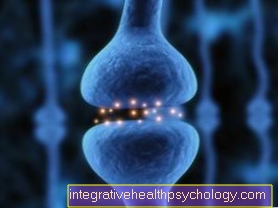
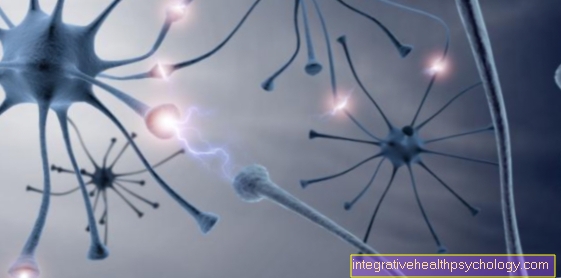

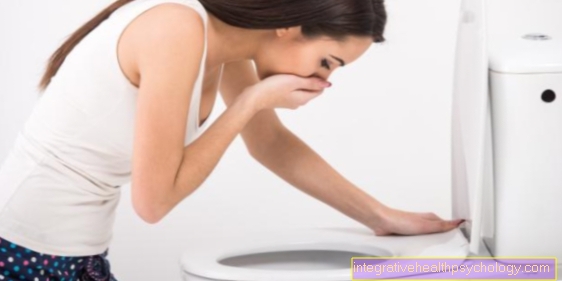




.jpg)
